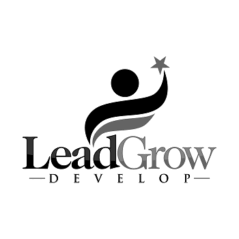Usually hear “Happy employees are productive employees”. What makes a workplace happy and efficient, really? It transcends the free breakroom coffee. Encouragement of employees improves their performance even in trying conditions. Crucially, private help such as the Employee Assistance Program (EAP) is vital. Employee Assistance Programs (EAPs) help employees discreetly handle money, mental health, stress, and family issues. Providing employees with a safe forum for communication and skilled support indicates that their health is important. Employees feel appreciated, concentrated, and engaged more. Support mechanisms like EAPs link the workplace and stabilise it. This makes sense for businesses aiming to increase employee involvement, lower stress, and cut costs.
What Is Workplace Productivity?
Workplace productivity describes how quickly and successfully individuals do tasks and reach objectives. It’s about accelerating and honing work. Support like the employee assistance program EAP helps keep employees focused and motivated. To be productive, you must work better not longer. Inspired, focused, and supported employees will help to improve things. Additionally helpful are wellness programs, open communication, and training. Goals help people perform better.
How EAPS Boost Workplace Productivity
People who are worried about their jobs, families, or money might lose concentration, lose energy, and miss deadlines. Employee Assistance Programs (EAPs) offer speedy individual therapy to handle these issues. Workers who get the right help feel less distracted, more in control, and more driven. This lowers sick days and increases output. EAPs show the company’s empathy, which increases work satisfaction and trust. Workers stay and do better when they feel appreciated and motivated. Over time, this raises production and enhances the workplace.
Services Offered By An EAP
One of the main products is employee counselling. It releases stress, anxiety, sadness, and loss. EAPs help spouses and parents deal with family and relationship problems. Financial advisers help people with money concerns. Some groups offer legal aid on child custody or rent. Many Employee Assistance Programs (EAPs) provide these services in person, via phone, or by online chat. EAPs give employees with personal problems quick, covert therapy before they affect their performance at work.
Real-World Benefits for Employers
Employee Assistance Programs (EAPs) are used by many, but companies gain as well. Absences from work drop. Early intervention helps to lower personal absenteeism, unwell, and anxious behaviour. EAPs enable individuals to concentrate and control their work, therefore increasing their output. One of the benefits is low change rates. More likely to stay is a supported staff member. EAPs’ caring and supportive atmosphere might also boost work mood. This streamlines collective projects. Early mental health therapy saves companies money on health care by helping to avert more general medical problems. EAPs help companies by improving worker productivity, health, and satisfaction.
Common Myths About EAPs
Many people do not know about Employee Assistance Programs (EAPs). Many people believe that EAPs are reserved for those with very serious mental health problems. They help with stress, motherhood, and money worries. Another fallacy is that using an EAP will let your boss know. Not accurate; EAPs are personal. Though it is common knowledge that workers pay nothing for EAPs. Still another presumption is that weak individuals need help. Talking to someone keeps you sane and helps you stay going. Research shows that EAPs work, contrary to common wisdom. They lower sick days, increase job performance, and foster contentment. Clearing these misunderstandings encourages more people to use EAPs.
How To Introduce An EAP in Your Business
Beginning an Employee Assistance Program (EAP) at your company begins with first-rate service. Select a service that provides money, legal advice, and counselling. Make sure your staff is program-savvy after you have selected. Call a meeting or a quick, courteous SMS outlining the EAP’s processes. Clearly state it’s free and private. Make sure managers understand the benefits so they can inspire staff members to apply them. Show EAP contacts either on your company’s website or in the break room. Tell staff members about the EAP via email or set up meetings. A good start gains users’ confidence.
Challenges In EAP Implementation
Though they offer many advantages, EAPs may be challenging to set up and run. One main problem is ignorance. Workers may not know how to make use of the tool. Another problem is shame. Some employees avoid the EAP because they worry they will be criticised or believe seeking help is weak. Limitations in communication might make the program content not precisely expressed. Those who question the service’s privacy may use it less. Selecting the right firm may be challenging when companies have to make sure services fit staff demands. At last, EAPs may not be applied sufficiently without regular advancement and leadership support.
Conclusion
If you wish to be more efficient, discard performance measures and time-tracking. Maintaining your staff’s health comes first in order of efficiency. Employee Assistance Programs (EAPs) help workers with personal problems that could compromise their drive or focus. EAPs provide workers with legal assistance, psychotherapy, and other services to keep them calm and involved.
